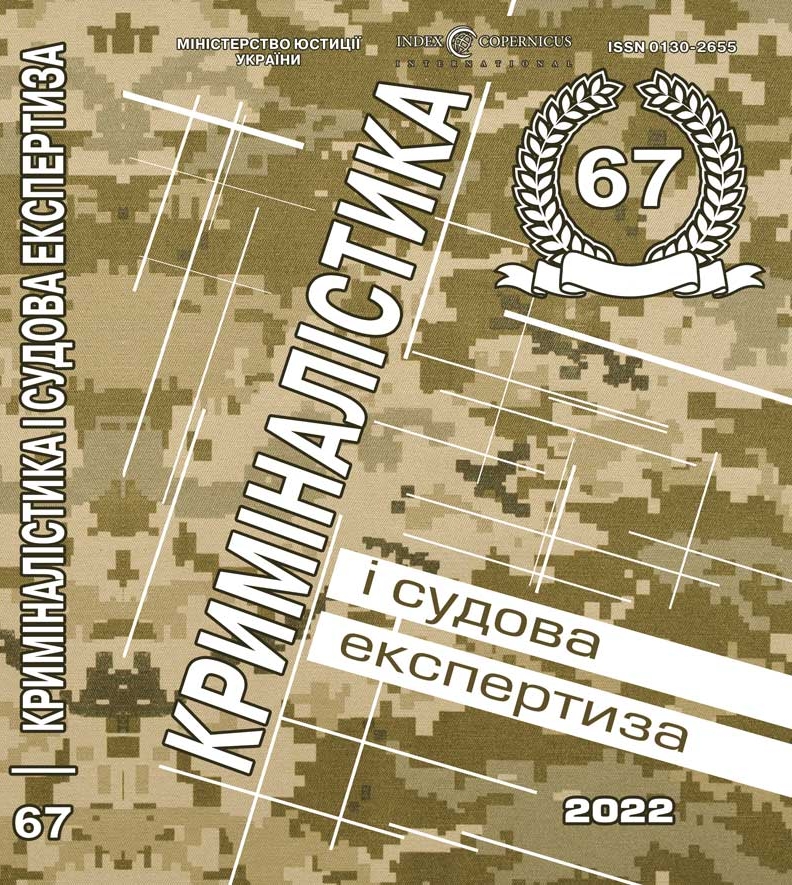
DOI: https://doi.org/10.33994/kndise.2022.67.26
A. Starushkevych
The “general method for investigating crimes” developed by Soviet criminologist Ivan Yakymov in the 1920s is considered. The positive qualities of the method are shown, namely, systematic, phased, adherence to activity and situational approaches, the use of a number of analytical techniques, the group nature of the implementation during the detection and investigation of the crime.
The systematic nature of the method can be traced in the fact that it is divided into successive stages, sub-stages, “means of inquiry”. The incidental evidence obtained because of its implementation is related to clearly defined tactical tasks aimed at achieving specific goals (“building a picture of the crime”, clarifying its circumstances, etc.).
The method is characterized by stages like stages are logically defined, consistent, the movement behind them makes it possible to clarify the “picture” of what happened, obtain and evaluate indirect evidence concerning the facts of the offender at the scene, his movement there, things and items that he seized as a result of criminal acts, the manner of committing both the crime as a whole and individual actions at the scene, as well as structural elements of the crime: methods of its preparation, direct commission, and concealment.
The method is built with the activity approach. It uses such elements of the approach as “object of crime”, “place of crime”, “tools” and “means of crime”, “traces of crime”, “eyewitnesses” of the event, “motives” of the perpetrator, and its “purpose”, “time”, “events”, “way” of the crime. All these elements are “embedded” in the method in accordance with the logic of the activity approach and make it possible to clarify them as the implementation of the measures proposed in the method (investigative and operational actions).
The analyzed method used a situational approach. The “deployment” of the method begins with the situation when the “scene” (crime) is identified, as well as the proposed actions in a situation where such a “scene” does not exist or physical evidence and traces of illegal actions, that is, destroyed. In addition, a variable situational approach to the evaluation of indirect evidence and actions of suspects is proposed.
Yakymov’s method took into account the best provisions of such methods previously developed by scientists from leading European countries E. Anushat (Germany), A. Weingart (Germany), G. Gross (Austria), A. Nietzsche (Italy), G. Schneik ert (Germany) etc. This method lays the foundations for the development of a modern section of criminology: forensic methodology and forensic doctrine of methods of investigating criminal offenses.
Key words: method of cognition in criminology, method of investigation, the general method of investigation, investigation of criminal offenses, history of criminology, crime detection, methods of crime investigation, activity approach in criminology, stages of crime investigation, Ivan Yakymov.










